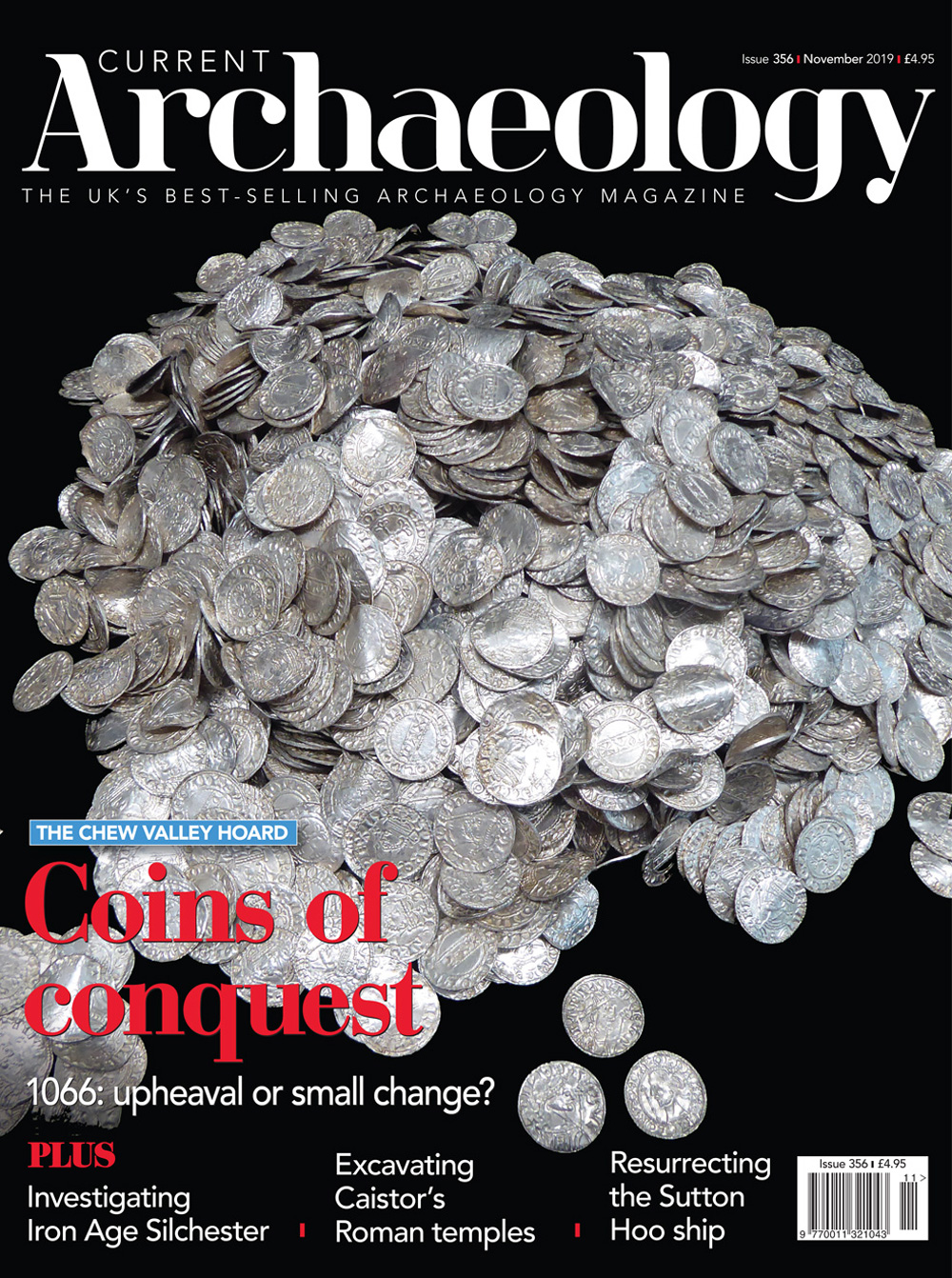The most-famous date in English history is said to be 1066 – but what was the immediate impact of the Norman Conquest? Our cover story explores a recently discovered coin hoard, the largest of its kind, buried in Somerset c.1068. What can it tell us about the first years after the Battle of Hastings?
/nThe hoard was found by metal-detectorists who immediately flagged it up to the Portable Antiquities Scheme. Responsible detecting and proper recording of finds are essential to our understanding of the past – and it was another swiftly reported metal-detecting discovery that sparked the excavation in our second feature. At first glance, the 6th-century grave found in Gloucestershire is a fairly typical, if high-status, Anglo-Saxon warrior burial – but its occupant was only 9-10 years old at death. What do their lavish grave goods signify?
/nThis issue also brings you reports from two more of this summer’s site visits. At Piddington, Northamptonshire, long-running excavations continue to explore a grand Roman villa estate. Meanwhile, investigations at Caistor St Edmund, Norfolk, have uncovered traces of one of the largest Romano-Celtic temples known in Britain. The rich historic landscape of the Peak District, which we explore in our penultimate feature, boasts an even grander scale. And ‘impressive’ is surely the word to describe both the spectacular Sutton Hoo ship burial and an experimental archaeology initiative currently working to create a full-scale replica of the vessel – a real voyage of discovery.
/nFinally, I would like to extend my best wishes to our Deputy Editor Kathryn as she embarks on an adventure of her own; a warm welcome to Amy Brunskill, who will be covering her maternity leave.
/nCarly Hilts
/nPS. Save the date! CA Live! 2020 will be on 28-29 February, for tickets and more details click here.
In This Issue: /n
FEATURES/n
THE CHEW VALLEY HOARD /n
/nUnpicking the largest coin hoard of the post-Conquest period What can a recently discovered hoard of over 2,500 coins from the reigns of Harold Godwinson and William the Conqueror tell us about change and continuity in the period immediately after the Norman Conquest?
AN ANGLO-SAXON ENIGMA /n
/nEncountering a cherished Cotswold child An excavation near Tetbury has uncovered an unusual 6th-century grave: although accompanied by high-status objects and warrior regalia, its occupant appears to have been only 9-10 years old at the time of their death.
RETURN TO PIDDINGTON /n
/nExcavating outside the villa Long-running investigations at a grand Roman villa have moved away from the residence itself and are revealing more information about an ancillary ‘stable’ building, as well as other periods of activity at the site.
A TALE OF TWO (OR THREE?) TEMPLES /n
/nRoman religion on the outskirts of Venta Icenorum A sequence of Romano-Celtic temples has been discovered on the outskirts of the Roman town of Venta Icenorum, near Norwich. Do the Iceni hold the key to explaining their location?
BREAKING THROUGH BOUNDARIES /n
/nReading the Peak District landscape The nature of the Peak District has changed dramatically over the years. The archaeology and atmosphere of this landscape is examined through a focus on its historic features.
RESURRECTING SUTTON HOO’S GHOST SHIP /n
/nThe beginnings of an adventure in experimental archaeology Experimental archaeology is being used to recreate the 7th-century Sutton Hoo ship, which was lost to decay long before the royal burial in which it rested was discovered in 1939.
NEWS/n
/nMesolithic maritime discovery at Bouldnor Cliff; Summer of finds at the Ness of Brodgar; Boxford mosaic fully uncovered; Successful surveying at Brú na Bóinne; Buried secrets revealed at Dinas Dinlle coastal fort; Science Notes; Shipwreck found at Pensarn Beach; Finds Tray
NEWS FOCUS /n
/nThe Great Dunham Torc: Bronze Age beauty from western Norfolk
SPECIAL REPORT/n
/nCaratacus at Calleva? Excavating Silchester’s Iron Age defences
REGULARS/n
/nCommentJoe Flatman excavates the CA archive
/nContextSquaring the circle: Muir of Ord, Highlands
/nReviewsExcavations at Oxford Castle, 1999-2009; Mining and Quarrying in Neolithic Europe: a social perspective; Knole Revealed: archaeology and discovery at a great country house; The Land of the White Horse: visions of England; Culture and Society at Lullingstone Roman Villa; 50 Finds from Berkshire: objects from the Portable Antiquities Scheme
/nExhibitionAdorn: jewellery – the human story at Colchester Castle
/nCalendarOur selection of exhibitions and events
/nSherdsChris Catling’s irreverent take on heritage issues
/nLast WordAndrew Selkirk on the recent Pilgrimage of Hadrian’s Wall
/nOdd SocsThe Brutalism Appreciation Society
/nHave all this delivered directly to your door every month – click here to find out more about subscribing to Current Archaeology, the UK’s favourite archaeology magazine.

